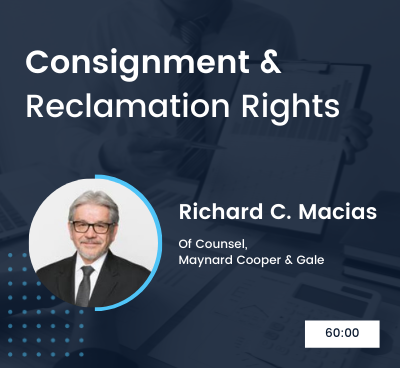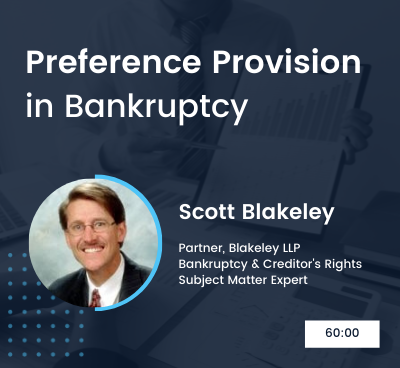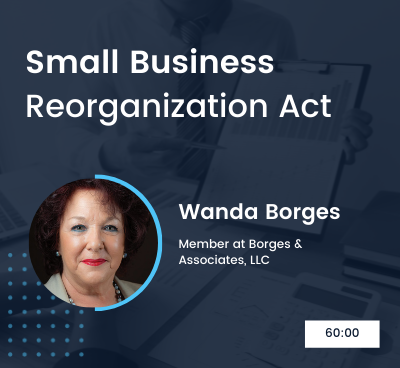|
Finding ways to mitigate risk while approving a sale to a buyer who may be a risk is part of the art of business credit. Sometimes suppliers provide goods to merchants on a consignment rather than a sale basis. Before attempting a consignment, a creditor needs to be aware of how to comply with the strict Uniform Commercial Code rules governing consignments.
Recovering goods shipped to an insolvent buyer through the process of reclamation is an important “self-help” tool under the UCC. Section 2-702(2) of the UCC provides for a seller's right to reclaim goods shipped to an insolvent buyer. If the buyer files for bankruptcy, Section 546(c) of the Bankruptcy Code kicks in to govern the seller’s reclamation rights. A reclaiming seller in Bankruptcy may also need to act to preserve an administrative expense claim under Section 503(b)(9) if the reclamation demand is not successful.
This course presents fundamentals about the treatment of consignments and reclamation rights under the UCC and the Bankruptcy Code. The discussion will include an analysis of the UCC definition of "consignment" and how it changes the “common law” of contracts, including the requirements for documentation and perfection. We will also talk about how to make a reclamation demand and other steps that may be required in the bankruptcy setting.
Our review will include:
1. What constitutes an enforceable consignment of "goods" under the UCC.
2. What steps must a consignor take to document and ensure perfection and priority of its interest over a bankruptcy trustee or competing secured sellers and lenders?
3. How does reclamation under Section 2-702(2) of the UCC differ from the reclamation under Section 546(c) the Bankruptcy Code?
4. Is an administrative expense claim available under Section 503(b)(9) if a reclamation is not available?
|





